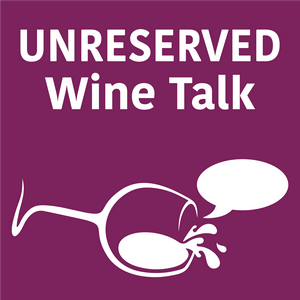341: Is A $400 Wine Really 10 Times Better Than a $40 One? Do Wine Labels and Glassware Matter More Than You Think?
Is a $400 wine really ten times better than a $40 one? Does the right glass really improve your wine and is it worth it when the size makes you look ridiculous? Why do wine labels matter and should the label’s look be part of every wine review? In this episode of the Unreserved Wine Talk podcast, I'm chatting with Charles Jennings and Paul Keers, co-authors of the hilarious book I Bought It So I’ll Drink It. You can find the wines we discussed at https://www.nataliemaclean.com/winepicks Giveaway Three of you are going to win a copy of their terrific book,, I Bought It So I’ll Drink It. To qualify, all you have to do is email me at
[email protected] and let me know that you’ve posted a review of the podcast. I’ll choose three people randomly from those who contact me. Good luck! You can find the wines we discussed here. Highlights Why do we feel guilty about window shopping when it comes to wine? What's the worst wine gadget or gimmick Paul and Charles have encountered? How did a 1947 Sauterne create a bond between Paul and a French wine seller? What was their most triumphant wine deal discovery? Are there elements that expensive wine delivers, that bargain wines can't? Why are Charles and Paul suspicious of mixed cases of wine? Has the quality and perception of box wines changed? What's the strangest vessel Paul and Charles have drunk wine from? What was it like drinking wine at 10 Downing Street and Lambeth Palace? What was Queen Victoria's tipple like? Why does Charles love drinking on his own? Which current wine trends will we look back on as ridiculous? Which wines would Charles and Paul now pair with their favourite childhood foods? Who would Paul and Charles love to share a bottle of wine with? Why should wine critics write about wine labels in their reviews? Key Takeaways Charles and Paul believe there is a greater experience to be gained from drinking better wine, but that the return for your money plateaus quickly. If you go up from a £10 wine to a £30 wine, you will really notice the difference and have a tremendously greater experience. But then if you multiply that by 10 and go from £40 to £400, the difference in quality isn't that great. If I've got people around for dinner and I sit at the end of the table and everybody else has got normal wine glasses, I look like a complete plonker. And I'd love to sit there, “Oh, it's magnificent.” And they're going to think, what an idiot. So unfortunately, it doesn't get much use. It does enhance the taste of the Bordeaux, there's no doubt about it, but I'm so embarrassed sitting there drinking out of this thing the size of a melon that it really doesn't get much use. Charles and Paul mention wine labels because they think that they are ignored by most wine writers, and they're terribly important for two reasons. Firstly, because they're about the only marketing that most bottles of wine have, because we go into shops and that's all we can see, the labels. And second, if you're setting a table for dinner, you've invested in the table, in the dishware, the cutlery, the glasses to set up this beautiful thing. Why would you put a bottle of wine on the table - however it tastes - if it looks terrible? Wine critics should always say what the label looks like and whether it would look good on the table. About Charles Jennings & Paul Keers Charles Jennings and Paul Keers are award-winning writers based in London, England. Charles and Paul co-authored the wine blog Sediment, described by New Statesman writer and Guardian literary critic Nick Lezard as “the finest wine blog available to humanity.” The blog became the basis for their book, I Bought It So I’ll Drink It. Book-Prize-winning novelist Julian Barnes called it “The funniest wine-book I’ve read in a long time. Not just laugh-aloud funny but snortingly, choke-on-your-cornflakes funny – up there with Kingsley Amis and Jay McInerney.” Their book won the prestigious André Simon Award. To learn more, visit https://www.nataliemaclean.com/341.
